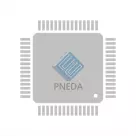The wide application of intelligent capacitor in power system

With the continuous improvement of industrial automation, enterprises have higher and higher requirements for power quality. As the main equipment of reactive power compensation, power capacitor plays a very important role. Because of its simple installation and convenient wiring, intelligent capacitors have been widely used in power systems. The following article will introduce smart power capacitors in detail.
Principle of intelligent power capacitor
Intelligent power capacitor is a device that integrates capacitor, reactor, measurement control module, cutting switch module, line protection module and man-machine interface module. The principle of reactive power compensation is to improve the proportion of active power in the line by compensating the reactive power of the power capacitor, so as to improve the power factor and power quality.
The importance of rated voltage
The rated voltage is the maximum voltage at which the capacitor can operate continuously. If the rated voltage chosen by the enterprise is too low, the capacitor will operate over voltage. Capacitor overvoltage operation for a long time will increase the loss of the capacitor medium, affect the service life of the capacitor, and even lead to capacitor damage and other failures. If the rated voltage selected by the enterprise is too high, the actual output capacity of the capacitor will be greatly reduced, resulting in unnecessary waste.
Problems that need attention
When selecting the rated voltage of the power capacitor, it should be selected according to the highest operating voltage at the capacitor access point. Therefore, the rated voltage of the power capacitor should be adjusted appropriately.
② After connecting to the grid, the power capacitor will cause the grid voltage to rise at the access point. If the enterprise does not pay attention to, you can choose a lower rated voltage.
③ When the power grid has harmonics, the reactors will be connected in series. After the series reactor, it will also cause the fundamental voltage of the grid to rise, so it is necessary to choose a higher grade of rated voltage.
(4) Ordinary power capacitors have 1.1 times the overvoltage capacity, and need to retain a certain safety margin; Therefore, the rated voltage of the capacitor needs to be appropriately increased.
On the one hand, choosing the appropriate rated voltage can ensure the safe operation of the capacitor and avoid its overvoltage operation; On the other hand, it can give full play to the capacity of the capacitor and save unnecessary expenses.
Advantages of intelligent power capacitors
① Flexible compensation method. Intelligent power capacitor can be used to solve the problem of reactive power compensation of three-phase imbalance in power system.
② Simple installation, easy wiring. Compared with the installation and wiring of ordinary power capacitors, intelligent power capacitors have less wiring, simple installation and easy maintenance; Expansion is more convenient.
③ Intelligent networking. Intelligent capacitors can be used alone or in multiple networks.
④ Temperature protection. Smart power capacitors are equipped with temperature protection devices. When the temperature in the cabinet reaches a certain value, the power capacitor will exit and protect the power capacitor.
In order to ensure the safe and stable operation of the power system, enterprises choose ordinary power capacitors or intelligent power capacitors. At present, the development time of smart capacitor technology is short, and it is generally recommended that you use ordinary power capacitors for reactive power compensation.
Die Produkte, an denen Sie interessiert sein könnten
 |
AIMC-0402-1N5S-T | FIXED IND 1.5NH 300MA 100 MOHM | 2124 More on Order |
 |
AIRD-03-2R2M | FIXED IND 2.2UH 21A 3 MOHM TH | 6096 More on Order |
 |
ASPI-8040S-8R2N-T | FIXED IND 8.2UH 3.45A 26 MOHM | 19932 More on Order |
 |
AMPDEDI-A05T3 | OSC MEMS XO DUAL OUTPUT | 4986 More on Order |
 |
AMPMGEB-33.3333T3 | MEMS OSC XO 33.3333MHZ CMOS SMD | 8784 More on Order |
 |
AMPMDEB-72.0000T3 | MEMS OSC XO 72.0000MHZ CMOS SMD | 4302 More on Order |
 |
AMPMDFB-3.6864T | MEMS OSC XO 3.6864MHZ CMOS SMD | 4068 More on Order |
 |
AMPMDEC-33.3330T | MEMS OSC XO 33.3330MHZ CMOS SMD | 5022 More on Order |
 |
AMPMADC-24.545454T | MEMS OSC XO 24.5455MHZ CMOS SMD | 4248 More on Order |
 |
AMPMEGD-44.0000 | MEMS OSC XO 44.0000MHZ CMOS SMD | 7596 More on Order |
 |
AMPMEGC-34.0000 | MEMS OSC XO 34.0000MHZ CMOS SMD | 6462 More on Order |
 |
AX7PBF3-933.1200C | XTAL OSC XO 933.1200MHZ LVPECL | 4644 More on Order |
 |
AX5DBF1-1244.1600T | OSC XO 1.24416GHZ 2.5V LVDS | 3978 More on Order |
 |
AX7DCF4-625.0000T | XTAL OSC XO 625.0000MHZ LVDS SMD | 3078 More on Order |
 |
AX5DCF1-705.8000T | OSC XO 705.8MHZ 1.8V LVDS | 4734 More on Order |
 |
AX5MCF2-270.0000C | OSC XO 270MHZ 1.8V CML | 4248 More on Order |
 |
AX5PAF1-266.0000T | OSC XO 266MHZ 3.3V LVPECL | 6282 More on Order |
 |
AX7PBF4-50.0000C | XTAL OSC XO 50.0000MHZ LVPECL | 2538 More on Order |
 |
ABM13W-80.0000MHZ-7-D1Z-T5 | CRYSTAL 80MHZ 7PF SMD | 8604 More on Order |
 |
ABM13W-52.0000MHZ-5-B2U-T5 | CRYSTAL 52MHZ 5PF SMD | 2916 More on Order |
 |
ABM13W-40.0000MHZ-6-N1G-T5 | CRYSTAL 40MHZ 6PF SMD | 8982 More on Order |
 |
ABM12W-33.3333MHZ-7-J1Z-T3 | CRYSTAL 33.3333MHZ 7PF SMD | 3564 More on Order |
 |
ABM11W-39.0000MHZ-4-J1Z-T3 | CRYSTAL 39.0000MHZ 4PF SMD | 8784 More on Order |
 |
ABM8W-44.0000MHZ-8-D1X-T3 | CRYSTAL 44.0000MHZ 8PF SMD | 6606 More on Order |









